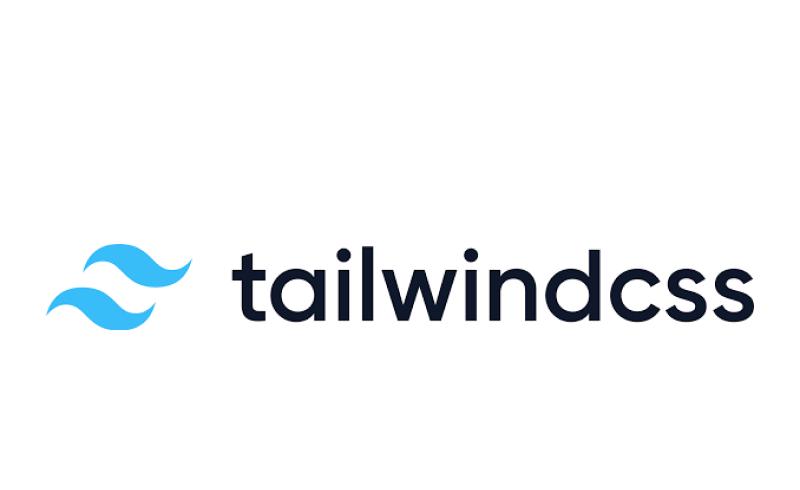Embraced by millions of users worldwide, the ability of Tailwind CSS to create websites faster and easier makes the framework a preferred choice for professionals who desire extensive control over their designs. Whether an organization or enterprise has experienced developers or individuals new to CSS, Tailwind CSS offers the necessary tools and flexibility to streamline UI development and achieve stunning results.
Overview of Tailwind CSS
In 2017, Adam Wathan, Jonathan Reinink, David Hemphill, and Steve Schoger started the development of this CSS framework with a focus to provide developers with an efficient way to build user interfaces. The project uses utility classes that can be directly applied to HTML elements for styling, eliminating the need for custom CSS. This approach gained popularity, enabling developers to quickly customize interfaces with utility classes for colors, spacing, typography, and many more.
How Tailwind works – A technical look
At its core, Tailwind CSS operates on the concept of utility classes, which are small, atomic CSS classes responsible for applying specific styles to elements. These utility classes offer a wide range of functionalities, including margin, padding, typography, colors, and more. By composing these classes, developers can quickly build and customize their designs without writing custom CSS code.
The framework’s utility classes are meticulously designed to follow a consistent naming convention, making it easy to understand their purpose. This consistency facilitates rapid development and collaboration among team members. Tailwind CSS also embraces a mobile-first approach, ensuring that designs are responsive and optimized for different screen sizes.
Tailwind CSS is highly flexible and can be integrated with various front-end frameworks such as React, Vue.js, and Angular. This compatibility allows organizations to leverage the power of Tailwind CSS while working with their preferred development stack.
To optimize performance, Tailwind CSS utilizes a Just-in-Time (JIT) compilation feature. This means that only the CSS classes actually used in the project are included in the final build, reducing the overall file size. Additionally, the framework integrates with popular build tools like PostCSS, enabling further customization and tailoring to specific project requirements.
What makes Tailwind CSS popular?
With a global user base in the millions, Tailwind CSS empowers professionals to craft visually captivating user interfaces, streamline workflows, and deliver outstanding projects. Tailwind CSS empowers developers to create unique and visually appealing user interfaces. By customizing the framework and leveraging its integration capabilities, developers can optimize their workflow, improve performance, and deliver exceptional projects that meet customer expectations.
| Simplicity and efficiency | Embracing a utility-first approach, a wide range of pre-defined classes is included for use directly in HTML markup, allowing for instant styling and saving time. Developers can quickly apply consistent branding and visual identity across their applications efficiently by leveraging pre-defined classes for typography, spacing, and layouts, developers can achieve a cohesive and polished UI with ease. |
| Flexibility and responsiveness | One of the standout features of Tailwind CSS is its flexibility and responsiveness. By adopting a mobile-first approach, Tailwind CSS ensures that user interfaces look great on various devices and screen sizes. Developers can easily create custom designs using low-level utility classes and achieve unique interfaces. Responsiveness is made simple through the use of breakpoints, media queries, and sizing units, enabling developers to create effective layouts that adapt to different screen sizes and provide optimal user experiences. |
| Powerful configuration system | With a powerful configuration system that allows for seamless integration with JavaScript frameworks and builds tools. TailwindCSS works well with component-based frameworks and supports HTML elements, making it highly versatile. Developers can leverage a class for every CSS property and define custom CSS properties and classes, achieving complex styling requirements with less knowledge of plain CSS and a profound understanding of CSS concepts. |
| Streamlined development workflow | Tailwind CSS provides a comprehensive set of utility classes that enable developers to build UIs efficiently. The framework includes grid classes, flexbox classes, and gap utilities for creating flexible and responsive grid layouts, streamlining the development process while preventing any confusion when working with CSS transitions, transform properties, and aspect ratios. Base styling practices like “Preflight” and “modern-normalize” to handle common CSS properties such as padding, margin, box-sizing, float, and z-index are built into the framework. |
| Free and open-source with a vibrant ecosystem | Among other frameworks on the market, Tailwind CSS is free and open-source without any licensing restrictions. With a vast collection of components and seamless integration with popular tools and libraries like Gatsby, Headless UI, Tailwind UI, and windiCSS, allowing for better design systems consistency and integration capabilities. This vibrant ecosystem provides developers with additional resources and extensions to enhance their Tailwind CSS projects. |
| Highly customizable and configurable | One of the most highly customizable and configurable frameworks on the market, offering developers the flexibility to modify various aspects in order to meet specific design requirements. Developers can easily customize colors, spacing, breakpoints, and more by modifying the configuration file, allowing for a more tailored experience to match individual styling preferences and unique design systems. With Tailwind CSS, developers are able to override default configurations, define color palettes, and style spacing, creating themes that align with their project’s needs. |
| Improved performance and project management | Optimized for project management and customer satisfaction, the framework integrates well with tools like PurgeCSS, which removes unused CSS during the production build process, resulting in smaller file sizes and improved performance. By eliminating unused styles, Tailwind CSS ensures that final CSS bundles are lean and efficient, leading to faster load times and improved user experiences. The framework’s extensive usage and ideal utilities contribute to effective project management and enable developers to deliver high-quality UI designs that meet customer satisfaction. |
Who uses Tailwind CSS?
From startups to large enterprises, Tailwind CSS has found favor among a diverse range of organizations. Web development agencies, in particular, have embraced Tailwind CSS for its ability to streamline the development process and facilitate rapid prototyping. Its simplicity, flexibility, and extensive documentation make it an appealing option for those seeking to build responsive and visually appealing websites without sacrificing customizability.

OpenAI and ChatGPT have taken the world by storm, revolutionizing the field of natural language processing and AI-driven conversational interfaces. Since launching, ChatGPT has achieved unprecedented success, becoming the fastest-growing consumer application in history. To support its innovative platform, OpenAI has recently redesigned its website, providing a user-friendly and visually appealing experience. The new OpenAI website showcases the power of Tailwind CSS, a highly efficient CSS framework that enables flexible and responsive web design.

Having a staggering number of over 2 million vendors, Shopify emerged as one of the world’s leading e-commerce solutions. Empowering businesses of all sizes, Shopify offers a comprehensive suite of tools and services to facilitate online selling. Recognizing the importance of a captivating online presence, the Shopify team recently underwent a website redesign. Leveraging the capabilities of React and Tailwind CSS, the new marketing website now boasts a modern and streamlined interface that effectively communicates the platform’s features and benefits.

Established in 2005, Mashable has garnered a substantial following with its extensive coverage of technology, science, entertainment, and other engaging topics. The platform continues to deliver up-to-date and compelling content to its readers. To ensure an optimal user experience, Mashable has built its website using Tailwind CSS. By leveraging the power of this CSS framework, Mashable can create a visually appealing and intuitive interface, enhancing the accessibility and readability of their articles and news stories.
Limitations of Tailwind
While there are numerous advantages for organizations seeking a utility-first approach to web development, it is essential to acknowledge the framework’s limitations. Understanding these limitations can help organizations make informed decisions and effectively navigate the development process.
Learning curve and initial setup
Organizations that are new to Tailwind CSS might find it challenging to understand and adopt the utility-first CSS approach initially. The framework’s unique class-based approach requires developers to learn a new set of utility classes and their corresponding functionalities. Additionally, setting up Tailwind CSS in a project requires configuring build tools, such as PostCSS, which can be unfamiliar to some organizations. However, with resources like comprehensive documentation and community support, the learning curve can be overcome, making Tailwind CSS accessible to developers.
File size and performance
One of the considerations when using Tailwind CSS is its file size and impact on performance. Tailwind CSS provides an extensive set of utility classes, which can result in larger CSS file sizes compared to handcrafted, minimal stylesheets. While the framework’s JIT (Just-in-Time) compilation feature helps generate optimized CSS on-demand, organizations should be mindful of the impact on the initial load time and overall performance of their web applications. Proper configuration, including tree-shaking and purging unused CSS classes, can mitigate this limitation and ensure optimal performance.
Customization and design consistency
Tailwind CSS offers a wide range of pre-defined utility classes, allowing for rapid prototyping and development. However, when it comes to customization and achieving a unique design language, organizations may find Tailwind CSS somewhat restrictive. The framework’s utility-first approach prioritizes consistency and simplicity, which can sometimes limit the flexibility in achieving complex design variations. Careful planning and additional effort to extend or customize the default styles are required in the case of specific branding or design requirements.
Semantic markup and HTML bloat
Tailwind CSS primarily relies on utility classes that directly apply styles to HTML elements. While this approach offers convenience and speed in development, it can result in HTML markup that may appear cluttered and less semantically meaningful. The heavy reliance on class names in the HTML structure can make it harder to understand the document structure and may require extra effort to maintain clean and well-structured markup. Organizations should consider finding the right balance between utility classes and semantic HTML to ensure the maintainability and accessibility of their web projects.

